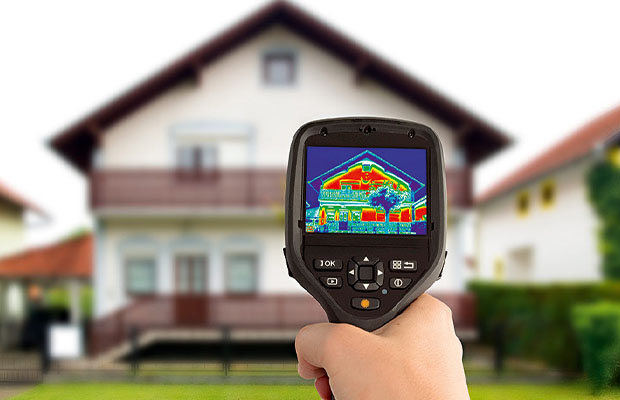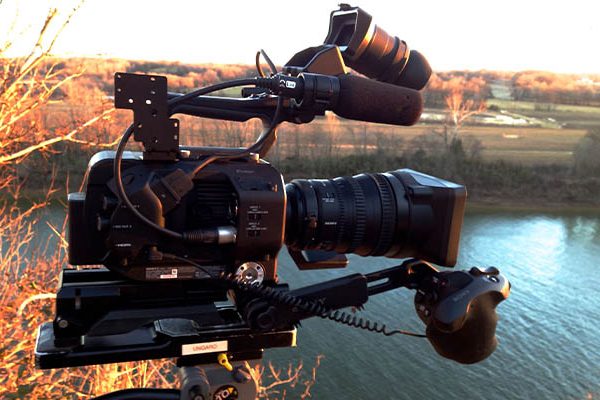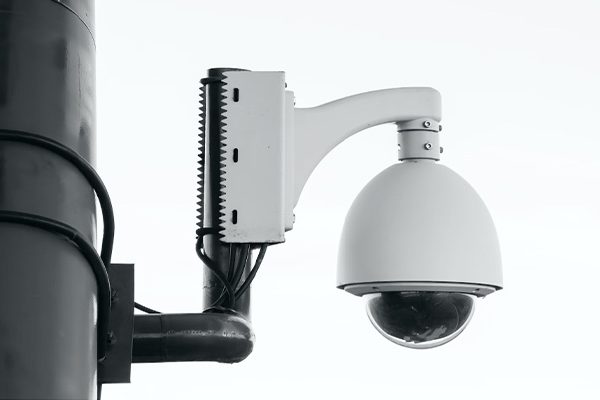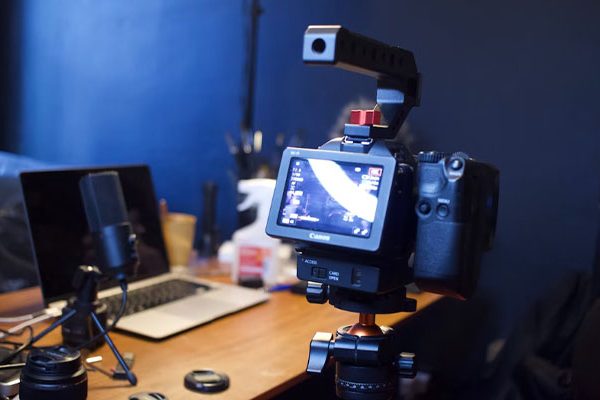At Red Current, thermal imaging is our area of specialty. To meet the expanding demands of clients in various industries, we offer high-performance thermal imaging cameras.
What makes thermal imaging cameras useful? Small temperature variations can be detected using thermal cameras. They are therefore useful for locating objects that the human eye cannot see, such as:
- Heat loss from structures
- Electrical equipment hot areas
- Individuals hiding behind walls
In this article, we discuss everything you should know about thermal imaging cameras. Move on and Read More!
Table of Contents
Thermal Imaging Camera: What Is It?
Designed to detect heat energy, thermal imaging cameras are portable electronic devices with an integrated display.
The most essential part of a thermal camera is a heat sensor joined to a unique kind of lens, which is then modified to function with conventional image-capture technologies. Engineers can quickly locate hot spots or sources of heat loss, such as overheating parts or potential thermal insulation gaps, as a result.
We can only see a small portion of the electromagnetic spectrum, which is visible light. The sensor on a thermal detection camera enables the user to view the otherwise invisible infrared spectrum, which exists at wavelengths between visible light and microwaves when pointed at an object or area.
Although black-and-white displays are still preferred for some applications due to their decreased visual “busyness” and improved capture of fine detail, this is frequently rendered as a color map in modern IR cameras.
Warmer elements or regions will typically be displayed on a color thermographic display as reds, oranges, and yellows, while cooler elements will typically be displayed as purples and blues (green typically denotes areas that are roughly at room temperature). Thermo cameras can also be used to locate heat sources in extremely dark or otherwise obscured environments because they detect infrared radiation rather than visible light.
How Do Thermal Cameras Operate?
Infrared light emitted by objects is picked up by the lens of an accessible thermal imaging camera.
The temperature of this light is then measured using a temperature map.
The circuit board is then supplied with electrical pulses that are derived from the temperature map.
The data is then transmitted to the display, where it can be seen in a variety of colors, indicating which areas have a high and low intensity.
To accurately track thermal performance, our thermal imaging cameras are innovatively built. Maximum functionality and cost-effective analysis are two things they are renowned for.
Advantages Of Thermal Imaging Camera
In comparison to regular cameras, thermal imaging cameras have many benefits. They can be used for:
- Find things that are invisible to the naked eye, such as heat leaks and hot spots
- measure the temperature of an object
- View in low light conditions
- Store images and videos for later analysis
In many industries, thermal imaging cameras are crucial tools. They can help you save time and money and find problems before they become expensive
What Makes Thermal Imaging Cameras Useful?
Finding water leaks, air leaks, electrical issues, and pest control are a few of the main applications for thermal cameras. I use thermal cameras as a home inspector primarily to find insulation and water problems, but inspectors occasionally spot rodents and electrical hotspots.
Because you can stand in the middle of a big room and quickly scan the entire room with a thermal camera, they are incredibly effective at spotting problems. Any obvious water or insulation issues will be very noticeable.
1. Find A Water Leak
Water leaks can easily be found using infrared cameras. Active water leaks inside a house will be blue on IR cameras because they will look cooler than the surrounding materials.
The water, on the other hand, retains heat longer than roof tiles, so if you’re looking for leaks outside, like in a roof, it will appear warmer after sunset. In fact, using a thermal camera outside in the sun could cause heat blindness because everything is at the same temperature and you can’t see anything.
Utilize a thermal imaging camera when performing a home inspection to quickly identify suspicious areas by scanning broad areas of a roof, basement, or bedroom.
A hygrometer, however, cannot be used to quickly sweep a large area. You can quickly check your basement for leaks by standing in the middle of the space and using infrared cameras to scan the entire area.
2. Loose Or Defective Wires
Without having to be close to any suspect electrical equipment, thermal imaging cameras can be a valuable tool for identifying electrical issues. Thermal cameras are excellent for detecting electrical defects, which are seen as orange-red on infrared cameras, as electronic components frequently overheat before failing (or catching fire).
Thermal imaging cameras can quickly inspect large areas and find sockets, switches, or light fixtures with loose wiring, defective, or overheating, much like finding water leaks or missing insulation.
If an electrical outlet or device displays a significantly higher temperature than a comparable outlet, the diagnosis is straightforward. When the switchboard cover is removed, the circuit breaker will appear as a hot light on a thermal camera, making it simple to spot a damaged circuit breaker.
You can see electrical issues or overheating motors by removing the cover from an HVAC heat pump or furnace.
3. Pest Control
You wouldn’t believe it, but finding pests can be done with a thermal imaging camera. Despite having cold blood, insects can produce enough heat when gathered in a nest or hive for infrared cameras to pick it up.
Simply run the thermal camera over the questionable area to find a termite or wasp nest. A thermal camera can help you locate the nest without removing the drywall by showing a large termite nest as reddish-orange on the image.
Use a thermal imaging camera to look for mice or other small mammals living in the attic if you think there may be a rodent infestation. The area where they entered the house would appear as a cold spot, and the insulation would have moved there, so the thermal camera can also find that area.
4. The Insulating Layer Is Missing
The detection of areas lacking thermal insulation is one of the most popular applications for thermal imaging cameras. A thermal camera enables you to stand in a room and quickly view a thermal image of the entire space, much like spotting a water leak.
When looking for insulation issues, heat blindness must be overcome, much like when looking for water leaks. You can use a small temperature change, or “ΔT,” to show areas of inadequate insulation on an IR camera by turning the HVAC up or down a few degrees.
Attics, exterior wall outlets and switches, window frames, and basement edge joists are a few locations that frequently have inadequate or no insulation.
5. Air Leakage
Thermal imaging cameras are especially helpful for locating air leaks, much like they are for identifying insulation issues.
The best way to find an air leak is to alter the air pressure in your home, unlike finding missing insulation. Utilizing a blower door device is the most effective way to alter the internal air pressure. Turning on range hoods, bathroom exhaust fans, and other ventilation equipment can create enough changes in air pressure to allow a thermal camera to detect air leaks if a blower test is not feasible.
Air leaks frequently occur around windows, doors, outlets, switches, light fixtures, and plumbing penetrations.
Of course, it’s crucial to use thermal cameras carefully near HVAC ducts. A year-round energy loss of up to 20% can be attributed to HVAC ducts with poor air sealing.
Tips On Using A Thermal Imaging Camera
Although they are a useful tool, thermal imaging cameras must be used properly if you want to get the most out of them. Here are some tips:
- Apply the appropriate resolution: The number of pixels in the image is its resolution. Detail is visible in greater abundance at higher resolutions.
- Use the proper field of view: The size of the area that can be seen in the image is known as the field of view. You can see more of the area around you thanks to the wider field of view.
- Use the right color scheme: The color scheme is used to demonstrate the image’s various temperatures. The color schemes White Hot and Black Hot are two popular ones.
- Take several pictures: It is easier to identify issues that are difficult to see when you take several pictures from various perspectives.
- Video and image storage: It’s helpful for later analysis to save images and audio.
Thermal imaging cameras are a useful tool for finding hidden issues. Your thermal camera will perform at its best if you use the proper resolution, the field of view, and color scheme.
Why Do Thermal Imaging Cameras Function More Effectively At Night?
Despite the fact that it has nothing to do with whether the environment is light or dark, thermal imaging cameras typically perform better at night.
Instead, thermal imaging sensors are able to show warm areas at higher contrast because the ambient temperature – and, more importantly, the core temperature of otherwise-unheated objects and environments – is nearly always significantly lower at night than during the day.
As long as it is daylight outside, objects such as structures, roads, vegetation, building materials, and more will gradually absorb solar heat energy, even on relatively cool days. Furthermore, as the temperature of the environment increases throughout the day, it gets harder to tell these kinds of objects apart from other warm objects that the camera’s sensor is used to detect and highlight.
For the same reason, most thermal imaging cameras will show warm objects in sharper contrast after several hours of darkness rather than just after the sun sets. Even during full daylight hours, they’ll typically be more effective in the early morning than in the middle of the day.
The Bottom line
The main applications for thermal cameras in home maintenance are listed below, though there are many more.
Using a thermal imaging camera to identify electrical problems or hot spots before they become major problems is extremely beneficial from the standpoint of pure safety.
Every year, more than 250,000 house fires start, but thermal imaging cameras can help avoid such tragedies.





